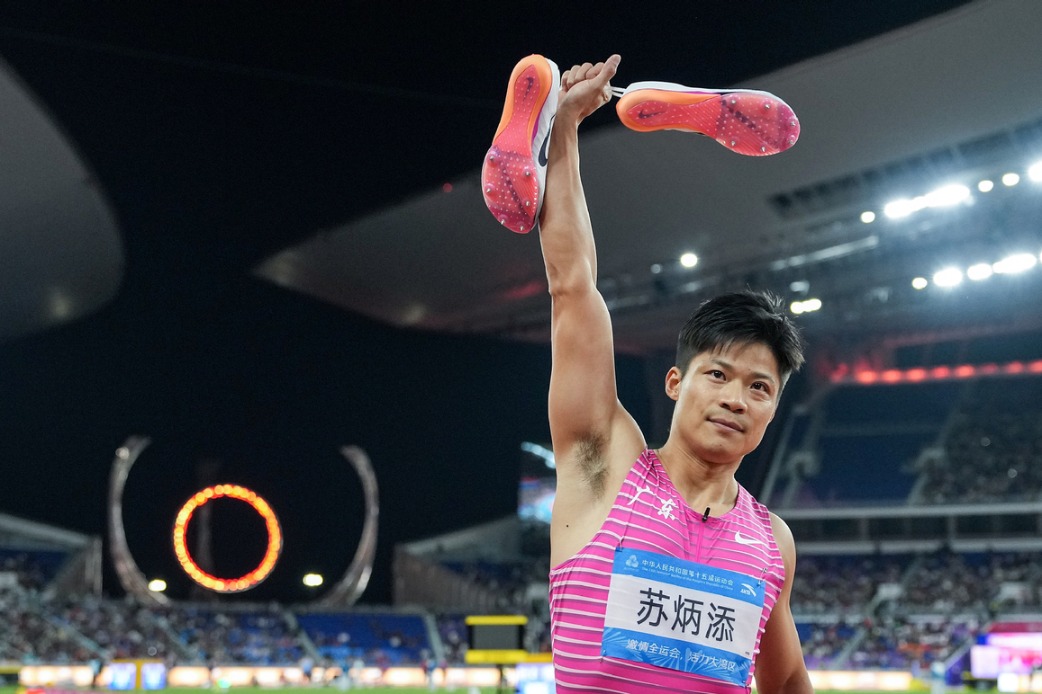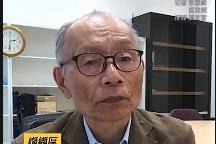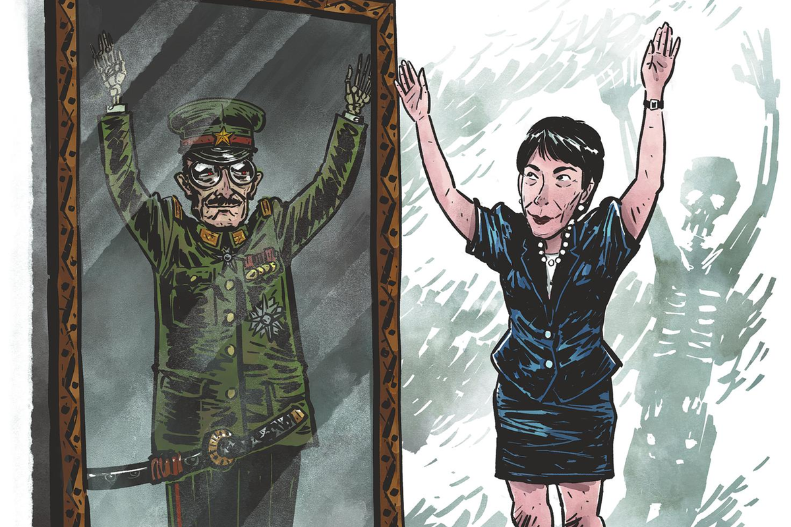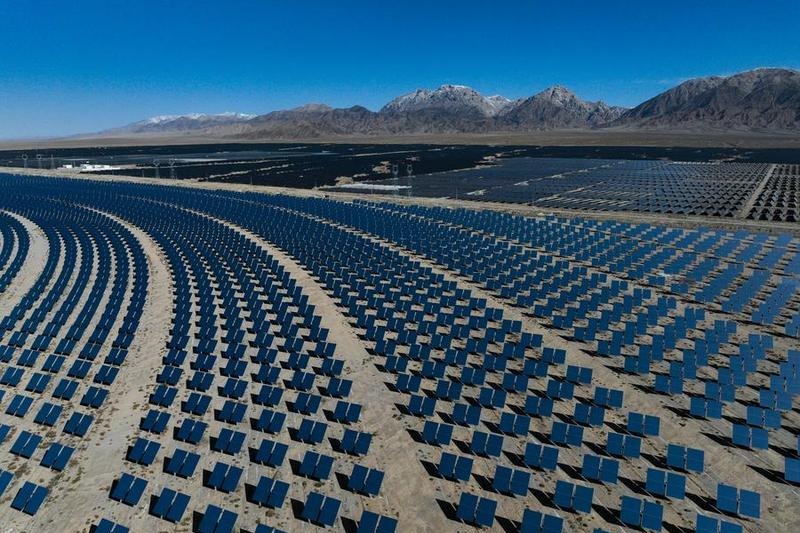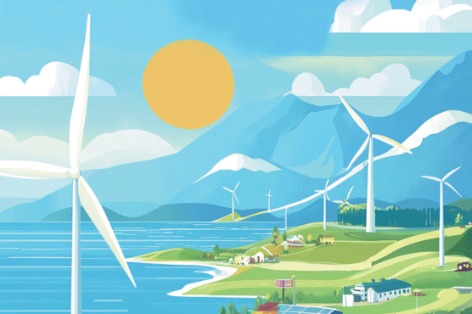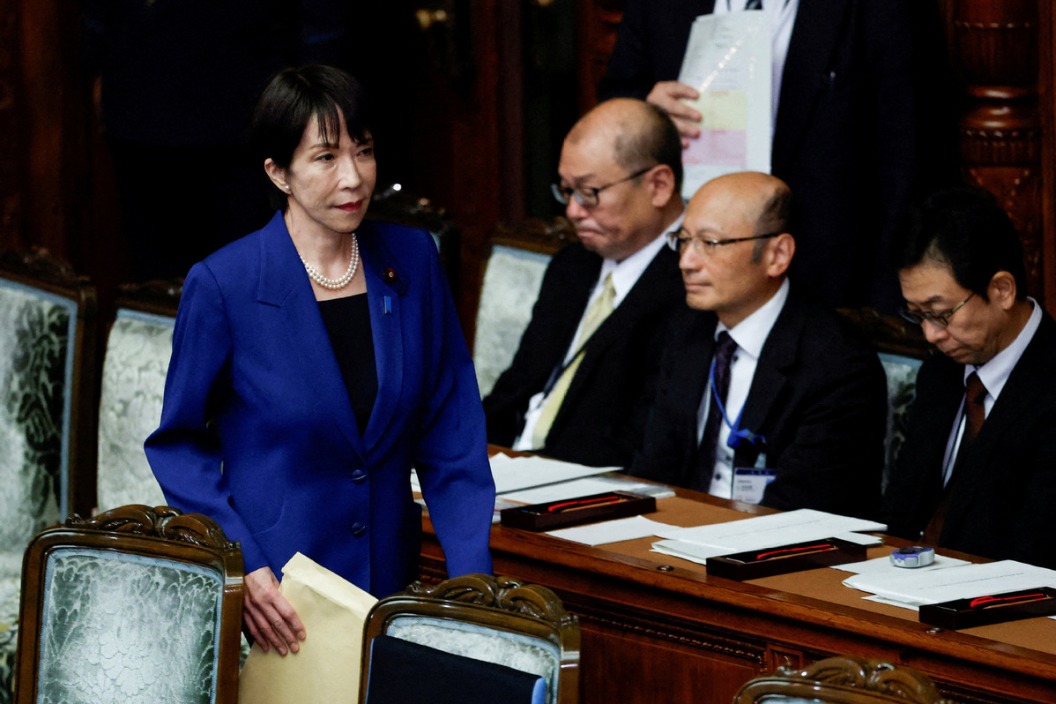Amid turbulence and change


The international community should work together to curb various crises to ensure the world goes in right direction
The report to the 20th National Congress of the Communist Party of China said the world has entered a new period of turbulence and change, which was a strategic definition for the changes in China's external environment. The most prominent feature for the period of turbulence and change is the "crossroads effect", or where global development is about to go.
The history and theory of international relations reveal that cyclical changes in world politics are the basic pattern for the evolution of human social life. Periods of stability and development, turbulence and change, and war and conflict often run in cycles. Today, it has become more than prominent that world politics has entered into a worrisome period of turbulence and change.
First of all, 2022 was destined to be a turning point in human history as confrontations and conflicts among major powers returned to world politics.
After the Russia-Ukraine conflict broke out on Feb 24, 2022, the Joe Biden administration and European countries chose not to directly send troops to intervene for fear of Russia's strategic and tactical nuclear forces. Instead, they chose to implement all-round sanctions against Russia and reduce or even halt the imports of Russian oil and gas. They also provided the Ukrainian government and its military with weapons and ammunition, intelligence support, and financial assistance, which strengthened the capacity and determination of the Ukrainian government, military, and people to respond to military strikes. Recently, the Biden administration has extended high-profile support to Ukraine. During Ukrainian President Volodymyr Zelensky's visit to the United States in December, the US promised to provide Ukraine with $1.85 billion in new military equipment assistance, which even included a Patriot air defense system. The US Congress passed a bill to allocate $45 billion in aid to Ukraine this year. In this context, the protracted Ukraine crisis is not so much a stalemate on the battlefield as it has fallen deeper into the dilemma of deepening political confrontation among all parties.
The longer the conflict between Russia and Ukraine goes on, the more serious political and economic troubles it will pose to Europe and the world, as its spillover effects will become more significant. The Ukraine conflict could trigger new oil, food, inflation and financial crises this year. Even the end of the conflict will inevitably lead to a lot of disputes, such as over who to be accountable for the conflict, the source of funds for Ukraine's post-war reconstruction, how to define the status quo of Ukraine, and many other issues. How to avoid the escalation and expansion of the Ukraine conflict, and how to prevent direct confrontation between Russia and NATO from turning into a limited tactical nuclear confrontation will also continue to plague the transformation of European geopolitics in the era of post-Ukraine conflict. Judging from the meeting between Ukrainian President Zelensky and US President Joe Biden at the White House in December and his subsequent speech in the US Congress, the nature of the Ukraine conflict as the worst proxy one between major powers since the end of the Cold War will also become more prominent.
Second, the United States has undergone a qualitative change in its relations with China. The Biden administration, which views China as the US' largest strategic rival and military threat, has begun to contain China in an all-round way. In the power distribution structure of a specific period of world politics, the relations between the most powerful and the second most powerful countries are the most complicated and conflicted among all relations. This theory and historical experience in major power competition have begun to re-emerge, which is the second characteristic of this era of turbulence and change.
The Biden administration and the US political elite have chosen to completely disregard the Chinese government's sincerity and determination to seek a way for the two countries to get along in the coming century. They have made no secret of the US' true nature as a hegemonic country, and continue to wage attacks on China in science and technology, trade, diplomacy, the digital sector, culture and education, as well as ideology, in an attempt to comprehensively contain and curb China's rapid development. The US has introduced bills such as the CHIPS and Science Act, the Inflation Reduction Act and the National Defense Authorization Act for Fiscal Year 2023.Such bills have expanded the list of sanctions against Chinese high-tech companies, and tried to piece together various geopolitical alliances to launch a comprehensive blockade on China's high-end chip and semiconductor sector. While imposing illegal sanctions and blockades on high-tech products from China, the Biden administration is restarting the process of reinvesting and reindustrializing of the domestic high-tech industry, trying to re-establish the dominant position of the US in global industry, supply and value chains for high-tech industries and reduce the scale of its imports of manufactured products from China. Washington has even stirred up the situation across the Taiwan Straits, exacerbating the tension across the Straits through actions such as the visit by Nancy Pelosi, the former speaker of the US House of Representatives, to Taiwan, and forcing TSMC and other high-tech manufacturing companies in Taiwan to transfer high-end production capacity to the US. The latter is an attempt to further hobble China's high-tech industry and extend the new Cold War to global high-tech industry chains. This series of actions from the US have not only resulted in plummeting stock prices for global chip manufacturers in 2022, but also deviated from the globalization that was built on freedom, openness and healthy competition.
Finally, it remains to be seen how the expansion and buildup in domestic political factors in Western countries will continue to mislead the relations between major powers and even intensify their confrontation due to the rise of narrow, paranoid and outrageous populism, white centrism, and hegemonic self-interest. This has become the third key characteristic of this period of turbulence and change.
The qualitative change in Washington's China policy resulted not only from the strategic concerns in US strategic and policy circles about China's rapid development and the closer gaps in balance of power between the two nations, but also its political need to play up the China threat, fueled by the serious political and social divides in the US. The more severe the divisions in the US are, the more the political and strategic elites in Washington will hype up the China threat, trying to use this to forge domestic unity and cohesion. At present, the move by the US to fuel tensions over the Taiwan question is largely a continuation of its domestic anti-China political climate. A confrontational relationship between Beijing and Washington not only goes against the fundamental interests of both peoples but would also lead to a disaster for the world. According to estimates by World Trade Organization economists, if the world economy is decoupled and splits into two independent trading blocs, the global gross GDP will contract by 5 percent, which would lead to losses even larger than that of the 2008 international financial crisis. Growth prospects for developing economies will be dimmed, with some facing double-digit welfare losses.
The deterioration in relations among major powers presents the biggest uncertainties in the period of turbulence and change. China, championing the vision for building a community with a shared future for humanity, refuses to decouple from the US, rejects a new Cold War, and refuses to allow China-US relations to fall into the "Thucydides Trap". However, the impacts from the period of turbulence and change have been further deepened under the impact from a series of structural conflicts in China-US relations, the prolonging of the Ukraine crisis, the quickening of efforts from Japan to build itself into a military power and India's attempt to reap the dividends from the strategic competition between major powers. This is a common problem facing the international community.
In order to prevent the period of turbulence and change from getting worse, the international community needs to work together to curb various crises and confrontational factors, contain the power competition among major countries, prevent the expansion of extreme thought and forces in domestic politics, and promote a reasonable and effective balance of power. The goal is to enable the world to return to a period of stable development as soon as possible and prevent the world from falling into a period of war and conflict.
The author is dean of the School of International Studies at Nanjing University. The author contributed this article to China Watch, a think tank powered by China Daily. The views do not necessarily reflect those of China Daily.
Contact the editor at editor@chinawatch.cn.

















